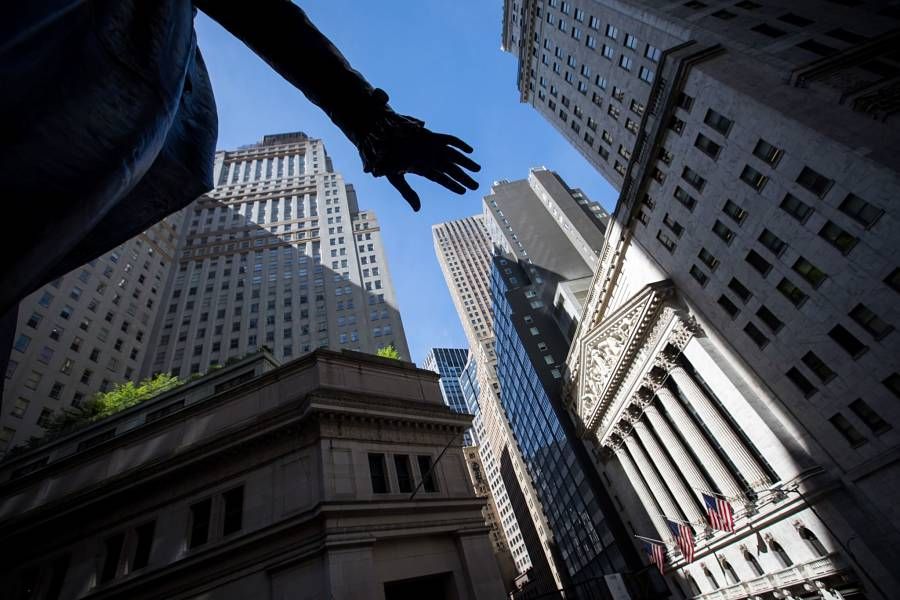It’s official. For the first time since the unveiling of the Paris climate agreement in 2015, banks earned more fees arranging green-related bond sales and loans than they did helping fossil-fuel companies raise money in the debt markets.
To be sure, the final tally for 2021 was incredibly close. Overall, banks pocketed an estimated $3.4 billion from green-labeled debt deals, compared with $3.3 billion from their work with oil, gas and coal companies, according to data compiled by Bloomberg. For context, in 2020, the split was $1.9 billion for green and $3.7 billion for fossil fuels.
The question now (at least for the less cynical among us) is whether banks are genuinely interested in helping companies and governments make the transition to clean technologies and energy efficiency. Or are they simply taking advantage of a market where they can currently earn hefty fees — a market where, coincidentally, transparency has yet to arrive and greenwashing runs rampant?
No bank stands out more than JPMorgan Chase & Co. as a barometer for where the financial services industry is heading when it comes to debt advertised as green or sustainable.
In 2021, JPMorgan ranked No. 2 in fees earned for organizing green-labeled bond sales and loans, with an estimated $159.2 million of revenue, just behind BNP Paribas:
Green debt fees 2021:
- BNP Paribas $159.6 million
- JPMorgan $159.2 million
- Credit Agricole $123.8 million
- Citigroup $121 million
- Deutsche Bank $105.9 million
However, JPMorgan remained the top arranger of debt transactions for fossil-fuel companies, the prime perpetrators of global warming, generating even more fees ($226 million) from its work with the oil, gas and coal sectors, Bloomberg data show:
Fossil fuel debt fees 2021:
- JPMorgan $226 million
- Citigroup $154.9 million
- Royal Bank of Canada $128.3 million
- Bank of America $113.5 million
- Wells Fargo $93 million
Despite its lucrative role in assisting the companies most responsible for the climate crisis, JPMorgan said in a statement that it’s committed to “scaling and commercializing critical technologies” needed for the transition to a low-carbon economy.
JPMorgan pointed to another promise it made last year: a sustainable development target of $2.5 trillion, including $1 trillion to finance green-related activities. Among other pledges, the bank also set 2030 as a deadline for carbon-reduction targets in the oil and gas, electric power and auto manufacturing sectors.
This week, JPMorgan announced that it had hired Ben Ratner of the Environmental Defense Fund to help advise clients on lowering their carbon footprint. He joined the bank’s Washington office Monday as an executive director, reporting to global head of sustainability Marisa Buchanan.
Analysts at BloombergNEF expect the growth of sustainable finance to accelerate in 2022. They are predicting that $2.5 trillion of debt advertised as green or ESG-oriented—green bonds, green loans, sustainability bonds, sustainability-linked loans, sustainability-linked bonds and social bonds—will be issued this year, up from closer to $1.5 trillion in 2021.
While there’s a general consensus that the green-labeled market will grow, it’s an open question whether banks like JPMorgan will accelerate their reduction of fossil-fuel financing. (Banks have been keen to point out that the fossil-fuel industry needs continued support during any transition period.)
A study released last month by the Sierra Club and the Center for American Progress said that eight of the biggest U.S. banks and 10 of its largest asset managers combined to finance an estimated 2 billion tons of carbon dioxide emissions, based on year-end disclosures from 2020. To put this figure in perspective, if the companies included in that research were one country, they would have the fifth-largest emissions in the world, falling between Russia and Indonesia.
While cynicism may indeed be warranted when it comes to green pledges from Wall Street, evidence continues to accumulate that its one dependable motivator makes green investment a no-brainer: money. As Swiss Re wrote last year, the global economy risks losing more than 18% of current GDP by 2048 if no action on the climate crisis is taken.








